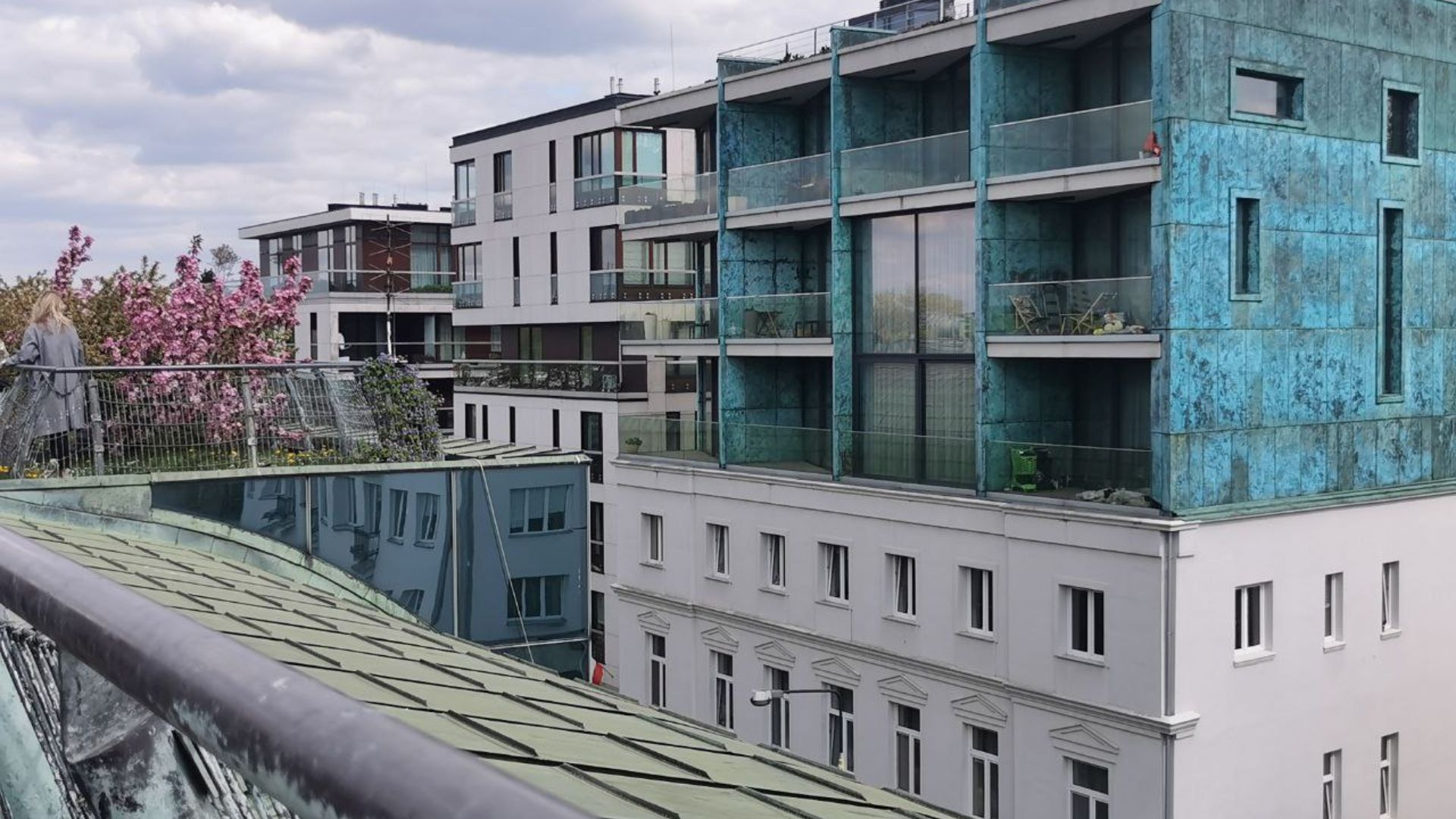
Maria Matushenko, an architect and interior designer at Znak Design, shared the case of Warsaw’s development of a city that is comfortable for its residents in the BZH magazine. Photos provided by the author.
At the beginning of the full-scale war, like many Ukrainians, I went abroad with my children. Instead of my native Kyiv, Warsaw became my city for six months, where I collected interesting observations about architecture, city planning, and their impact on the lives of residents.
Greenery, more greenery
Warsaw is a very green city. Walking around it, one constantly come across tree plantations, neat parks, and areas with wild grasses growing freely. Mowed lawns or inscriptions or images lined with flowers on flower beds are not in trend here. The focus here is on the beauty of plants, on the beauty of nature, and not on adjusting nature to human needs, for example, for advertising purposes.
The city cares about biodiversity. In particular, wooden houses for insects have been installed in squares and parks as an alternative to fallen trees, where they hide in the wild. It also provides food for birds.
Tram routes are widespread in Warsaw, and with them a green river flows through the city as if it were a planted grass on the tram tracks, which looks very aesthetically pleasing and helps to reduce the heat in summer. Greenery can also be seen on the flat roofs of public transport stops.
I was especially impressed by the special bridges for animals over the highways outside the city. They are made of stone, wide (10-12 m), with beautiful flowing shapes and planted with trees, and look like an extension of the forest. Their function is to keep people and animals safe, preventing accidents and injuries.
It is noteworthy that Warsaw was not always like this. After Poland joined the EU in 2004, it was considered one of the dirtiest cities in the EU. And they started to fight this, the EU allocated a budget for greening and beautification, and the city gradually began to make dramatic changes. As the Poles told me, at first these changes were incomprehensible and caused resistance, but later everyone felt how much more pleasant it was to be in the urban space.
Architecture: intelligence, adherence to style, reconstruction
Modern architecture in Warsaw is a great example of intelligence. I didn’t see any pomp and circumstance that is quite common in Kyiv, but the prestige of the buildings is demonstrated by the materials of high quality on the facade, interesting fencing on the balconies, unusual window treatments, etc.
Warsaw is architecturally structured, and there is no such thing as an old three-story building with a glass skyscraper next to it. By the way, there are not many tall buildings; residential neighborhoods are usually no more than 9 stories high. But in the city center there is a business complex of 30-storey buildings, which, however, are not too densely packed, connected by convenient infrastructure, and surrounded by green areas.
It is noteworthy that housing in the Polish capital is quite expensive, and therefore “Asian” housing options are becoming more and more common, with apartments of 20, 10, and even 5 m². I worked on a large project involving the construction of a 9-storey residential complex with slightly larger compact apartments of 25 m². At first, it was psychologically difficult for me to design such a small space, but in the end, I gained useful experience and wrote down some life hacks that I am sure will be useful for similar projects in Ukraine, and they will definitely be in the background of the reconstruction.
I would also like to note a good example of the reconstruction of some of the old town buildings that were destroyed during World War II. It took me a while to believe that it was a reconstruction – for example, they didn’t just paint the facade antique, but made layers of several different colors to give the impression that it had been repainted several times. And they even recreated the traces of horse-drawn carriages that rounded to the corners of the buildings at the bends. It’s really impressive.
Lest you think that everything is perfect in Warsaw, I will also cite a negative case that many Poles are outraged about. In the middle of the city, there is a huge sports stadium that can be seen from almost every corner of Warsaw. It is built on swampy soils, contributes to traffic jams during major events, and is not original in terms of architecture. Obviously, it is an example of corruption, which, albeit in small amounts, takes place in Warsaw construction cases.
Finally, let me add something about infrastructure. Warsaw has developed comfortable public transportation and a sufficient number of underground parking lots. In residential neighborhoods where there are no such parking lots, you are allowed to park your car on the street, but not just anywhere and not in the yard. I used to live in such a neighborhood, and I could safely let my children play in the yard, knowing that they did not have to watch out for cars coming by.
In general, all of this contributes to a comfortable life in the city – in terms of convenience, aesthetics, and physical and psychological well-being. I hope that these European practices of modern urban development, taking into account the health and comfort of residents, will be implemented in Ukrainian cities over time.


